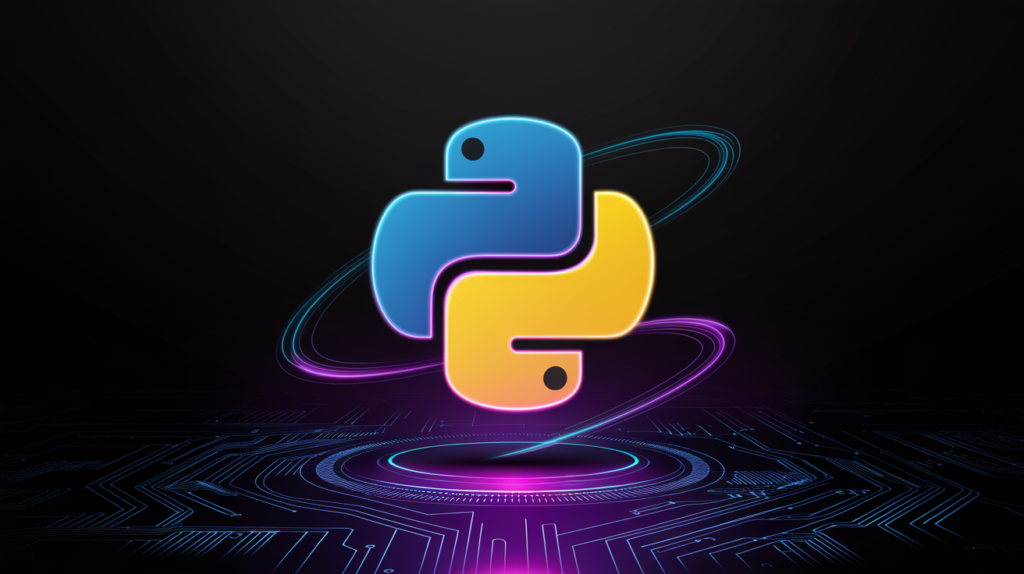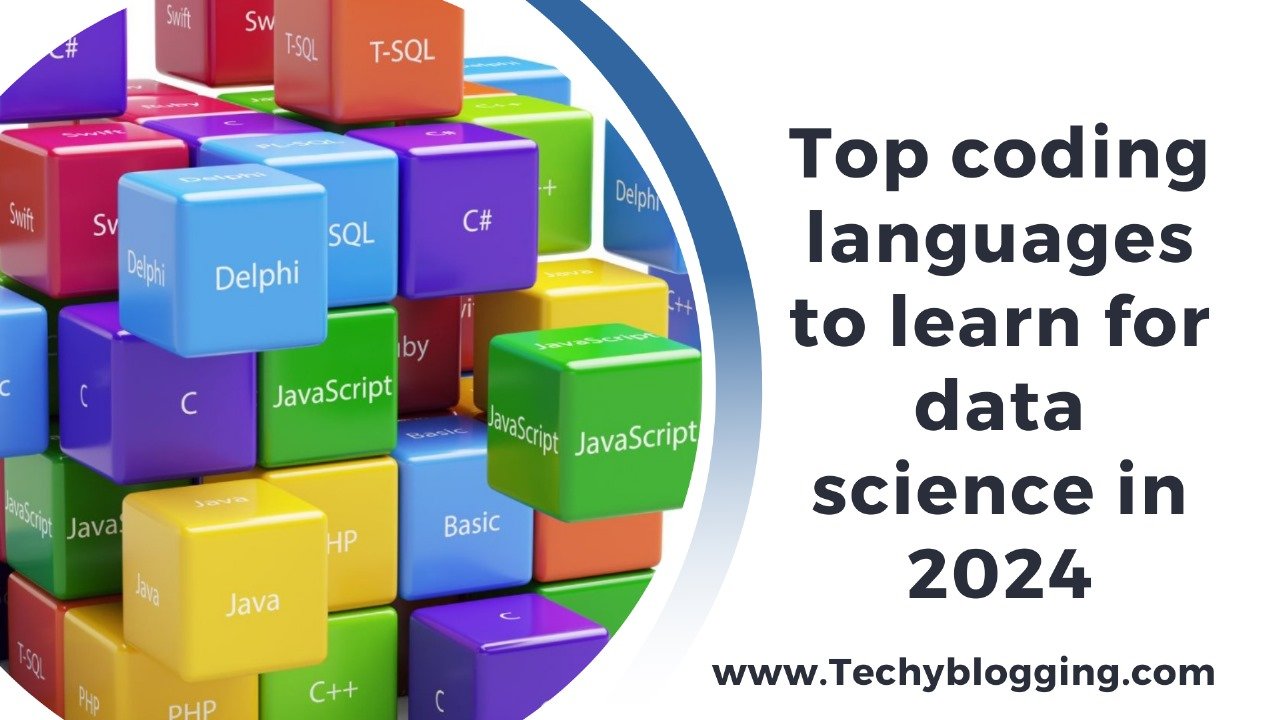Top coding languages to learn for data science in 2024. The field of data science is evolving rapidly which means that the need for professionals that can use data to gain practical data has never been more important. No matter if you’re starting your journey into data science or are looking to increase your skills, knowing the languages used in coding that are currently required is essential for staying relevant within this fast-paced sector.
By 2024, a variety of programming languages will be essential to data science because of their strong libraries, the ease to use, and broad acceptance. This is a comprehensive list of the most popular programming languages you need to master in the field of data science this year.
1. Python: The Undisputed Leader

Why Python is Essential for Data Science
Python is still the most well-known and well-known language used for data science and with reasons that are well-founded. Popular for its simplicity as well as its versatility and library functionality, Python is a go-to option for various tasks, between data analysis and machine learning as well as the field of artificial intelligence (AI) and deep-learning.
Key Libraries and Frameworks
- Pandas for Data manipulation and analysis
- NumPy The essential element to use for numeric computing
- Matplotlib/Seaborn: For data visualization
- Scikit-learn is a powerful software to help machine learning
- TensorFlow/Keras to use for deep learning applications
The Python ecosystem is rich and allows data scientists to simplify their processes. This makes Python the ideal feature for novices and experts.
Use Cases in Data Science
- Cleaning and processing data
- Exploratory Data Analysis (EDA)
- Modeling statistically
- Machine learning as well as AI
2. R: The Language for Statistical Computing
Why Learn R for Data Science?
Although Python is a general purpose language, R is specifically designed to be used for statistical computation and data visualization. It’s particularly well-liked in academia as well as research sectors in which statistical analysis play crucial roles in such areas as finance, healthcare as well as social sciences.
Key Libraries and Frameworks
- ggplot2: For data visualization
- dplyr/tidyr: For data manipulation
- Shiny for building Web applications that are interactive.
- Caret for machine learning
Use Cases in Data Science
- The statistical analysis of hypothesis testing and the test of hypotheses
- Visualization of large databases
- Genomics and Bioinformatics
- Dashboards and reporting
R is a great option for people who wish to specialise in the field of advanced statistical analysis as well as visualization of data.
3. SQL: The Language of Databases
Why SQL is Crucial for Data Scientists
Although it is not a general-purpose programming language such as Python as well as R, SQL (Structured Query Language) is essential for data scientists working using database systems that are relational. SQL permits you to access data, analyze, and manipulate massive databases, such as MySQL, PostgreSQL, or SQL Server.
Key SQL Concepts to Master
- SQL queries on databases together SELECT statements
- Data aggregation using GROUP BY, and having
- Joining tables for information from a variety of sources
- Subqueries as well as advanced SQL functions
Use Cases in Data Science
- Data extraction using relational databases
- Cleansing and transforming structured data
- Processing large data sets efficiently
The process of learning SQL is crucial for interfacing with databases. This is an essential part of numerous data science-related initiatives.
4. Julia: The Rising Star in Performance
Why Julia is Gaining Popularity
Julia is a powerful programming language that’s increasing in use in the field of data science, particularly in tasks that need large amounts of numerical computation as well as performance optimization. It blends the ease of usage found in Python along with the performance of languages with lower levels such as C or Fortran and is therefore ideal for massive data analysis and simulations.
Key Libraries and Frameworks
- DataFrames.jl: For data manipulation
- Plots.jl: For data visualization
- Flux.jl: For machine learning
- DifferentialEquations.jl: For solving complex mathematical models
Use Cases in Data Science
- Simulations and scientific computing
- Large-scale data analysis
- Performance-critical and optimization applications
Julia is particularly beneficial for fields such as finance, physics as well as engineering, where efficiency and speed are vital.
5. JavaScript: The Language for Data Visualization and Web Apps
Why JavaScript Should Be on Your Radar
JavaScript is frequently overlooked within the traditional workflows for data science, however, it’s becoming increasingly important for data scientists that need to build interactive data visualizations or use machines learning models in the web-based environment. By with libraries such as D3.js as well as Plotly, JavaScript enables highly interactive and dynamic visualizations.
Key Libraries and Frameworks
- D3.js: For personalized, interactive visualisations
- TensorFlow.js: For using machine learning models inside the browser
- Plotly.js: For an easy to implement visualizations
- Node.js: For creating web-based applications that are scalable
Use Cases in Data Science
- Interactive dashboards, visualizations, and interactive displays
- Machine learning models are being deployed to the internet
- Tools and applications for data on the web.
JavaScript is particularly useful for researchers who are looking to create users-friendly tools, dashboards or live-time visualization of data.
6. Scala: A Powerhouse for Big Data
Why Scala Is Key for Big Data
Scala is a less well-known language in comparison to Python or R It is commonly used for big data applications specifically when it is used with Apache Spark, one of the most well-known frameworks used to perform distributed data processing. The ability of Scala to process huge amounts of data within an environment that is parallel is a requirement to those who work with massive data.
Key Libraries and Frameworks
- Apache Spark: For distributed data processing
- Akka is a method of creating highly distributed, concurrent applications.
- Play Framework: For web development
Use Cases in Data Science
- Processing distributed data using Spark
- Big Data Analytics and Machine learning
- Live streaming of data and analysis
The Scala’s speed, as well as its compatibility with Big Data tools makes it ideal for big-scale analytics projects.
7. MATLAB: The Tool for Advanced Data Analysis
Why MATLAB Remains Relevant
MATLAB is frequently utilized in engineering and academia fields that need sophisticated mathematical or statistical analysis. Although it isn’t as popular in its use as Python and R, MATLAB excels in the area of numerical simulation as well as matrix operations and linear algebra. It is the ideal tool for areas like aerospace, robotics and the processing of signals.
Key Libraries and Frameworks
- Matlab Data Analysis and Machine-Learning Toolbox to help with the analysis of data and for modeling
- MATLAB Deep Learning Toolbox: For neural network design
- MATLAB Optimization Toolbox for solving difficult optimization challenges
Use Cases in Data Science
- Image and signal processing
- Mathematical modeling that is complex
- Simulations of engineering
MATLAB is commonly employed in research-intensive environments or industries that demand heavy-duty computation math.
Conclusion: Choosing the Right Language for Your Data Science Journey
The perfect programming language you can choose depends on your individual preferences, job goals, and the nature of work in data science you’d like to undertake. in 2024 Python as well as R remain the most popular language used for the majority of jobs in data science, providing an extensive set of tools to statistics, machine learning as well as data visualization. As data science gets more sophisticated it is essential to learn languages like Julia for speed, SQL for management of databases, as well as JavaScript to support visualisations on the web will help you be noticed in this highly competitive area.
Be aware of the latest the latest trends, test your skills to rise your knowledge, and concentrate on the languages that are compatible to the type of project or the industries you’d like to enter. Enjoy programming!




